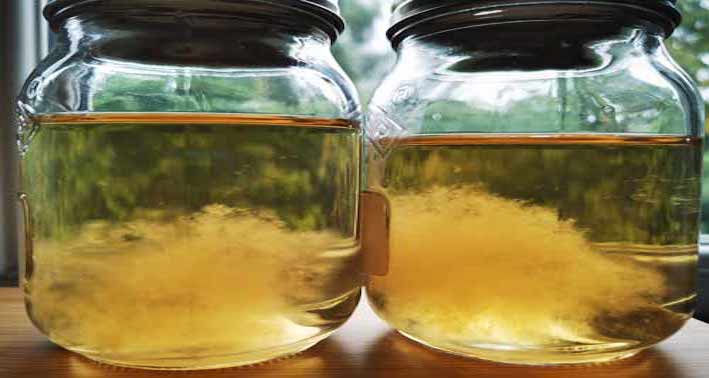Of course mushrooms pop up in the wild all the time, but how does one purposefully make ’em sprout? We’ve covered the much-googled PF-Tek, the favourite method for advanced growers. But have you ever heard of Liquid Culture? No? Well, lets take a sip…
In the traditional way (PF- Tek or similar), spores are added to the substrate, which are nutritional grains with enough moisture for mycelium growth. During the incubation period, the baby mycelium starts to develop and “spread” all over the substrate. Its a popular and successful method, no doubt — but did you know that there’s a faster way to cultivate mycelium, without the use of substrate? It’s called liquid culture… where the mycelium develops in a jar of liquid. And when done right, liquid culture may also bring about limitless mycelium. Sounds crazy, right?
Well, allow us to explain!
What is Liquid Culture?
Liquid culture is basically a mixture of water and various types of sugars. When inoculated with spores, this solution can help bring about mycelium growth.

After the mycelium “wakes up” in this sugar water, the liquid culture can now be added to the substrate to grow properly. (You can also keep it in the jar as it is, as a live shroom culture.)
Despite its nickname as “sugar water”, liquid culture should never use household sugar (aka sucrose) as a nutrient source. The following types of sugar may be used instead:
- Honey (preferably organic, but non-organic will do)
- Maple syrup (organic)
- Corn sugar
- Light malt extract (the lighter the better, for a clearer view of growth in the jar)
- Karo “Light Corn Syrup with Real Vanilla” (NOT the dark Karo, as it contains brown sugar!)
- Dextrose (aka glucose). *Note: Due to its lack of extra nutrients, using dextrose may result in slower growth.
Advantages of Liquid Culture
Liquid culture is great for inoculating lots of grain spawn quickly, and at little to no extra cost.
Because you no longer have to wait for the spores to germinate (or “wake up”) in the substrate, incubation periods are reduced by at least 7 days, or a week.
By using liquid culture, there is potential for limitless mycelium growth. How? Once mycelium starts to develop, it just keeps going. So a single 1cc spore solution may lead to gallons of liquid culture — if you’re an advanced grower, that is.
Also, you can add hydrogen peroxide (H2O2) to your substrate right away to ward off contamination. Usually, this chemical waits until the mycelium has grown, since hydrogen peroxide is deadly to spores. But since the spores are growing separately in liquid cultures… you can spray ahead!
How to Make Liquid Culture
For a honey-based liquid culture, the basic steps are as follows:

- Add 4% honey to water, and mix in a jar.
- Sterilize the jar mixture in a pressure cooker at 15 psi for 30 mins.
- Inoculate the jar with mycelium spores.
- Wait for mycelium to grow (aka incubation period) for 2 weeks or so. Shake regularly.
- After a couple of weeks, inject (or pour) into your substrate.
As a general rule, liquid cultures are at a 4% solution of the right sugar + nutrients in water. So 4 grams of honey, for example, per 96 ml/cc of water (which weighs 1 gram per ml/cc).
(Another possible mix for liquid culture is 1 tbsp of raw honey + 1,500 ml of water + 1 tsp of light malt extract. Mix all this in a jar, then sterilize in a pressure cooker. Et voila!)
Cons of Liquid Culture
If you’re still a rookie at cultivating magic mushrooms, then you should probably not use liquid culture for now.
Liquid culture is amazing — but it also contaminates very easily when not stored properly. This is bad news if your grow bags rely solely on liquid culture. So it may be best as a side-project for extra spawn (not as your main source).
You can tell a liquid culture is contaminated if:
- It has greenish scum on top of the water;
- It smells rotten or foul
- It remains super cloudy after 1 week (and you can’t see through the culture at all)
Besides, liquid culture costs very little (or nothing at all), so if you lose an entire batch of grain spawn to it… the only thing you’ve really lost is time and effort.
Only for Experienced Growers
Liquid culture is the perfect method for mushroom growers with a need for speed. That being said, grow kits with the mycelium poised to sprout, like these, are even faster! These are ideal to gain experience — both in handling spores, and storage conditions — as well as for reliable shroom growth in general.
Now that you’ve read this beginner’s guide to liquid culture, what do you think? Is it for you?





